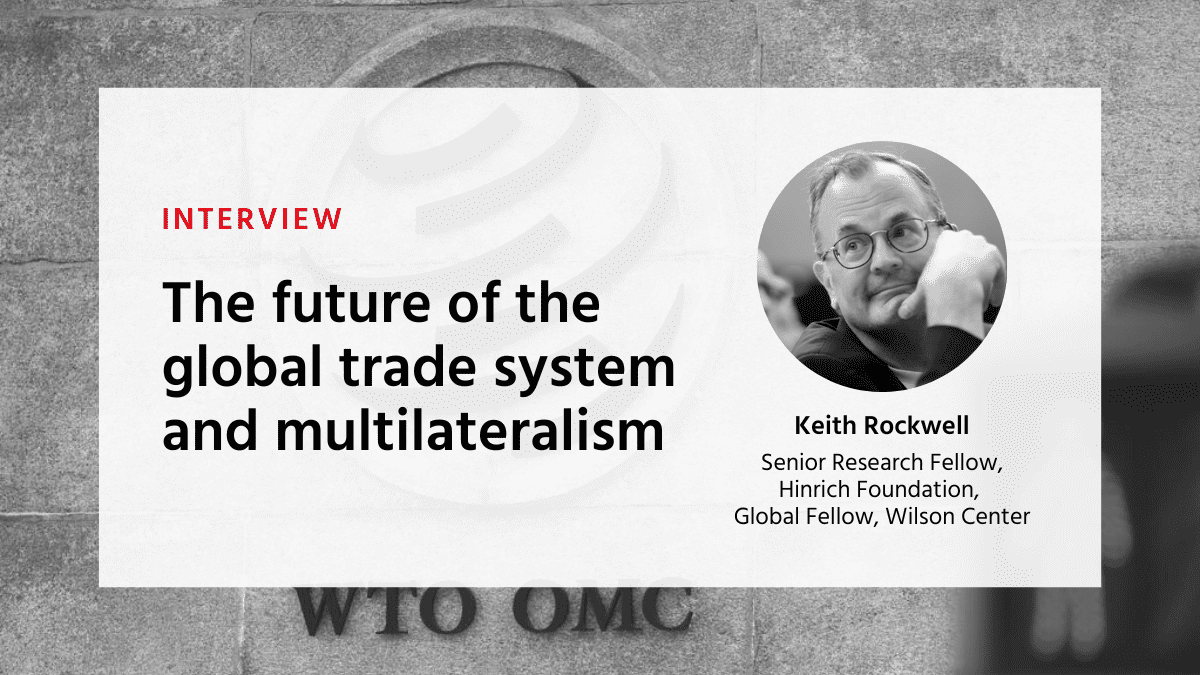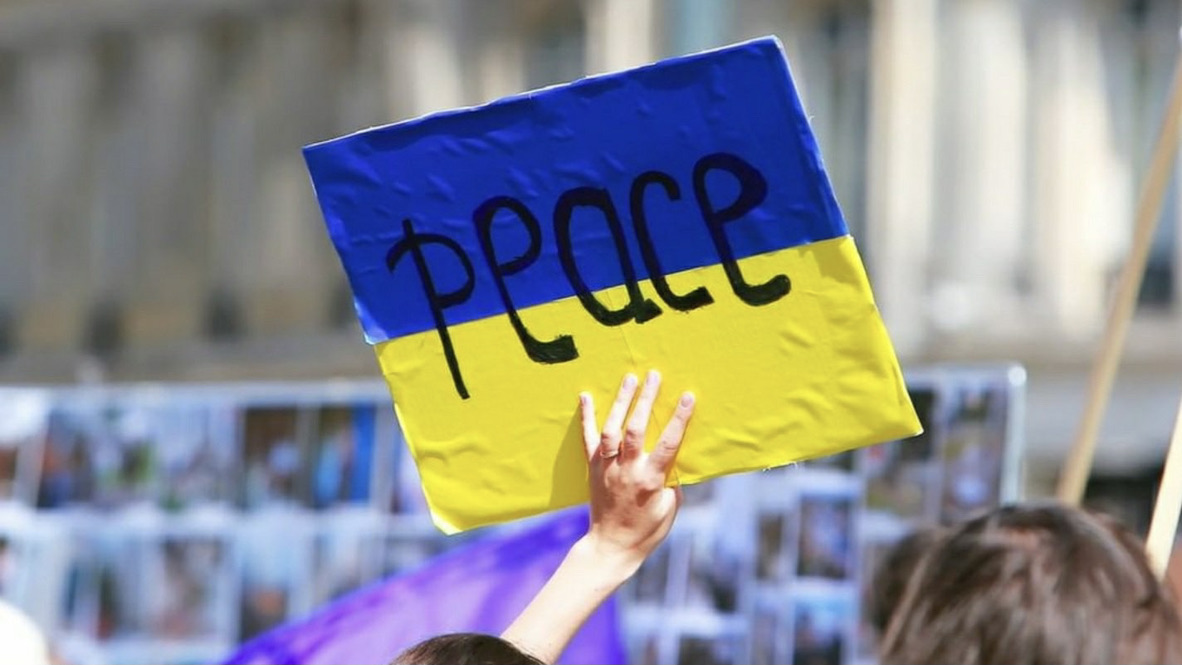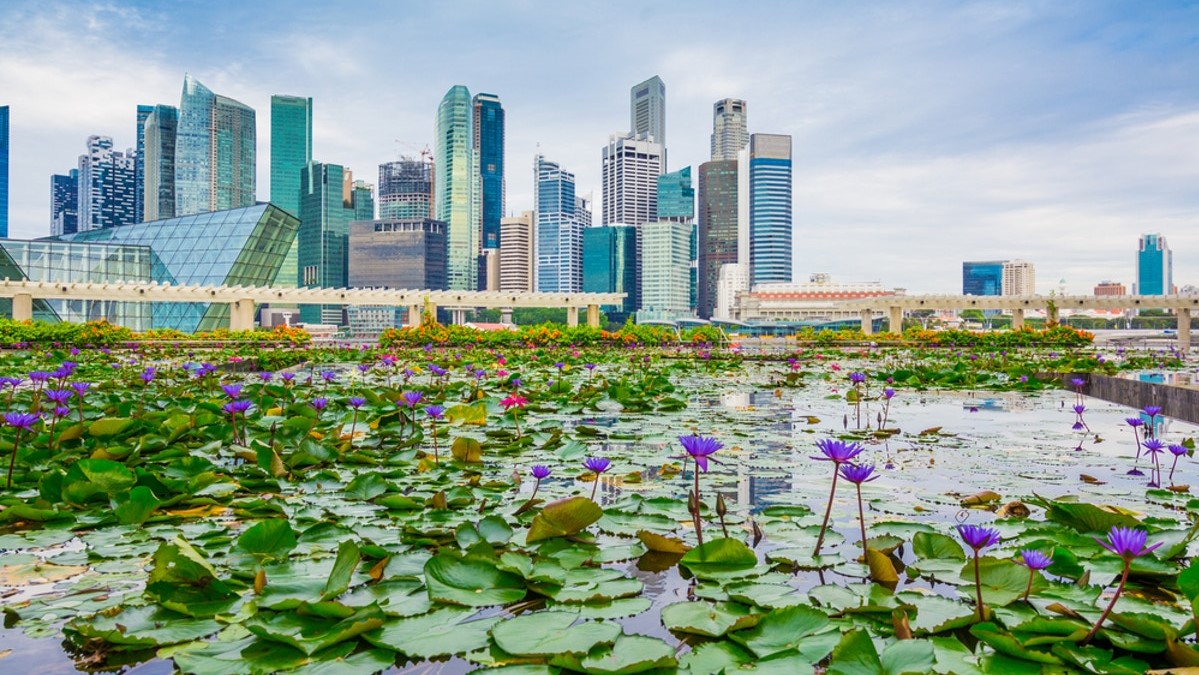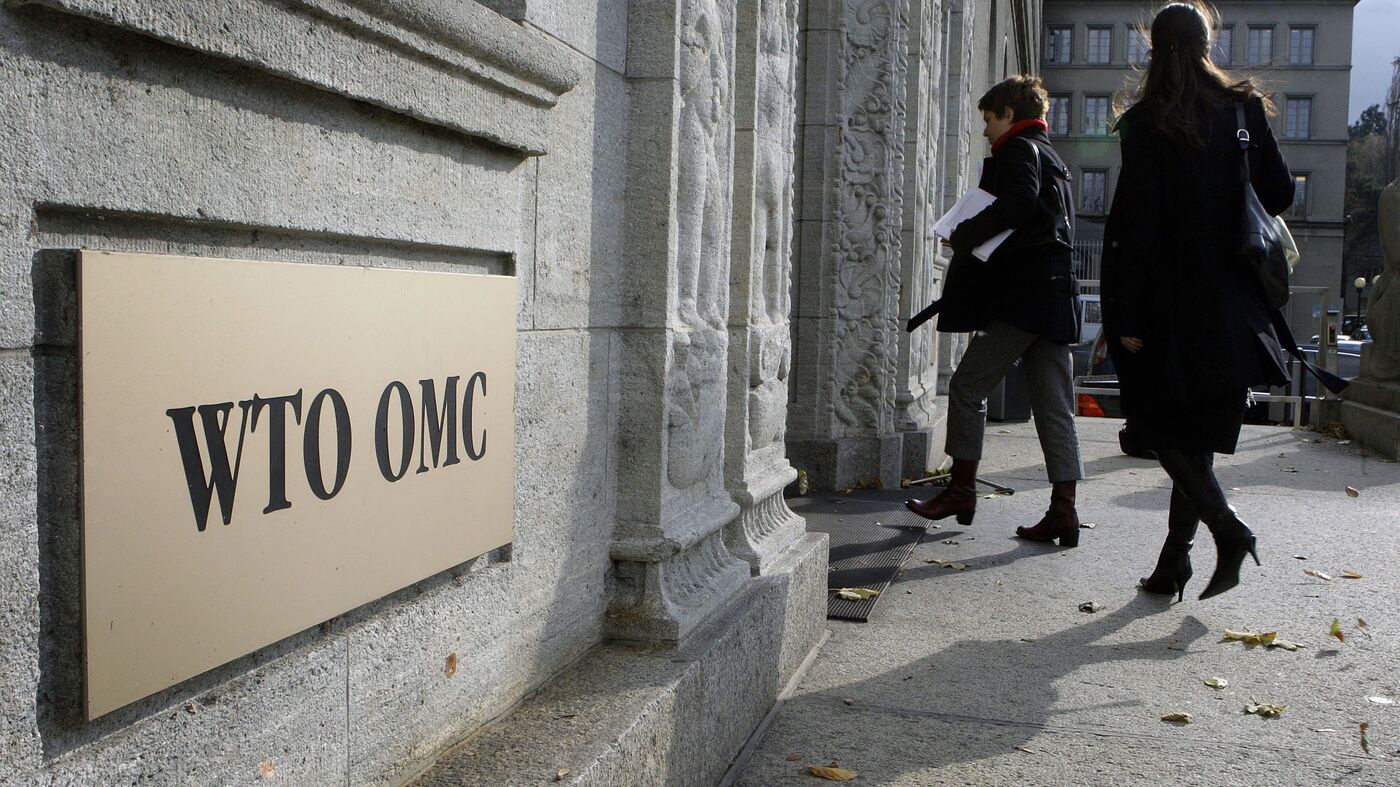WTO
The future of the global trade system and multilateralism
Published 02 May 2023
The resilience of the multilateral trading system has been severely tested as war in Europe rages on. The prospect for more trade liberalization is remote, and a further sliding into protectionist policies is likely to most heavily impact vulnerable economies, says Senior Research Fellow Keith Rockwell in an interview with the US Association of Foreign Press Correspondents.
Rockwell highlighted the potential benefits of further multilateral liberalization in promoting stability, preventing conflicts, and reducing inequality. By encouraging a rules-based system that fosters cooperation and mutual respect among nations, trade liberalization can help prevent conflicts and promote greater inclusivity. However, Rockwell also acknowledged that the gains from trade liberalization are not evenly distributed and can create winners and losers. Therefore, policymakers and international organizations like the WTO must put policies in place to ensure that vulnerable groups are protected and that the gains are distributed fairly.
The conversation with Rockwell underscores the importance of promoting a rules-based global trading system and the potential benefits of further multilateral liberalization. However, it also highlights the need for policies that ensure the gains from trade liberalization are distributed fairly to prevent vulnerable groups from being left behind. The insights provided by Rockwell will be valuable for policymakers and international organizations working to promote inclusive economic growth and stability in an increasingly interconnected world.
Rockwell’s interview with foreignpress.org is within the scope of AFPC-USA’s partnership with the Hinrich Foundation. The AFPC-USA is solely responsible for the content of this interview.
The following conversation has been condensed and edited for clarity.
How has the multilateral trading system managed to remain stable during the war in Ukraine? Have there been any unintended consequences of the multilateral trading system's resilience during the war?
The trade impact of the brutal war in Ukraine is complex and the difficulty in obtaining accurate data makes the picture somewhat murky. Moreover, huge variations in commodity prices during the conflict create a gap between trade volumes and trade values. To get the best picture of trade flows one has to measure their volume because in this way you can minimize the effect of price distortions. There is also a striking degree of disparity when you measure the trade impact of the war across a range of products and markets.
Given all these provisions, what we can say is that the trade impact of this war has been dramatic but perhaps not as dramatic as it might have been had the trading system not been as resilient as it has been. Many of the early predictions for trade and economic growth proved to be far gloomier than the results that emerged. Trade growth in 2022 figures to be around 3.5%, for instance, significantly better than the 3% expansion forecast by WTO economists predicted a year ago. The final figures for 2022 and the latest forecast for 2023 and 2024 will be issued in April.
Supply chains retained their strength as well with intermediate goods trade – the best measure of supply chain activity – growing by 4% in the second quarter of 2022 from the previous year. Countries that had been affected by supply disruption were quick to shift to other producers – and in some cases other products – which showed the value of the open global trading system.
Mid-October 2021 to mid-October 2022, (non-COVID-related) import-facilitating measures introduced by WTO members covered $1.038.4 trillion of trade, far exceeding the trade coverage of import-restrictive measures $163.5 billion.
In terms of trade, Ukraine and Russia are not big players in the largest sense but for specific products they have traditionally been extremely important producers and exporters. Some countries have been heavily dependent on Russian and Ukrainian exports particularly for grains, edible oils and fuel. Before the war, the two countries accounted for but 2.5% of world trade in goods. But in 2019 they supplied around 25% of wheat, 15% of barley and 45% of sunflower products exports. Russia accounted for 9.4% of world trade in fuels, with a 20% market share in natural gas exports.
Before the outbreak of hostilities, over 50% of wheat imports for Egypt, Lebanon and Tunisia were shipped from Russia and Ukraine. Impressively, these countries were able to find new sources of supply, which is another strong indication of the importance of an open and vibrant global trading system.
The trade impact on the combatant countries was obviously more profound than anywhere else. Ukraine’s total exports decreased by 30% due to the devastation inflicted on large segments of the country’s transportation and manufacturing infrastructure. Estimates are that as much as half of the country’s economic infrastructure was destroyed.
Russia’s exports increased by 15.6%. This reflects price increases for specific commodities, notably fuels, grains and fertilizers. In volume terms, WTO economists believe Russia’s exports may have declined. Many of Russia’s traditional export markets dried up due to the imposition of sanctions, with exports to the United States and Western Europe plummeting. These declines were somewhat offset by rising sales to China, India and Türkiye.
Russia’s imports declined by 28.9%, with the biggest reductions coming on imports of manufactured goods like cars, electrical machinery and telecommunication equipment.
Russia’s fuel exports were up to Turkey, China and India but down to Western Europe as conservation measures and shifts in suppliers weaned big energy consumers like German off Russian energy. According to the International Energy Agency a record $560 billion was invested in 2022 in improving energy efficiency and as a result the global economy used energy 2% more efficiently than in 2021.
Roughly 75% of gas reliant industrial companies in Germany were able to reduce gas usage without cutting production. Moreover, a 2022 study reports that industrial and small users reduced gas consumption by up to 19%-36% respectively, in September 2022 compared to the previous year. Overall, the data show that trade in products and by countries highly dependent on supply from Russia and Ukraine was remarkably resilient.
For Russia, which had invested immense time and resources in developing Western Europe as its principal market for energy exports, the reality is that this market may have evaporated for a very long time to come.
What are the gains from further multilateral liberalization?
The best way to look at the importance of trade liberalization is to look at the counterfactual, i.e., what would happen if the world were to fragment into rival trading blocs. WTO economists estimate that the global income gap between fragmentation and further liberalization is significant, and the impact would be most severe on small, weak and vulnerable countries. The opportunity costs of decoupling into two rival blocs relative to more liberalization are estimated at 8.7% of real income at the global level, varying between 6.4% for developed countries, 10.1% for developing countries and more than 11.3% for least developed countries.
The unfortunate reality at this time is that the prospect for further trade liberation is remote. We do not see a strong appetite among the big players for further market opening for trade in goods, services or agriculture. The best we can hope for at present is that we hold the line against further sliding into protectionist policies.
What are the costs of decoupling into two rival blocs?
WTO economists warn that if the world were to fragment into two trading blocs, it would result in a 5% loss of real global gross domestic product over the longer term. The International Monetary Fund estimates of the impact of fragmentation vary depending on the degree of fragmentation. In the longer-term, the cost would range from 0.2% of global output in a limited fragmentation scenario to almost 7% if the break is deeper and wider. This is roughly the combined GDP of Germany and Japan. If technological decoupling is added to the mix, some countries could see losses of up to 12% of GDP, according to the Fund.
What are the benefits of reglobalization?
The benefits of reglobalization are not only about income gains but also about resilience and security for the supply of goods. This was evident during the pandemic when the conveyor belt that is trade kicked into high gear to ensure that medical goods were delivered to needy countries. The fact that trade in medical goods grew by 14.4% annually between 2019-2021 (to $2.65 trillion from $2,028 billion) is very telling.
Before the pandemic, in 2019, trade in medical goods was 5.3% of total world trade but this share jumped to 6.6% in 2020 and was at 5.9% in 2021. In 2020 alone, world exports of personal protective equipment, like masks, rose by 44.6%.
Still, there is no doubt that the political winds have shifted on globalization, and we will have to change the way we do things. There are a number of reasons for this, the brutal reckoning of climate change being prominent among them. There is also the fact that the benefits of globalization were not equitably distributed. Domestic policies on income distribution, education and training and health care did not adequately evolve to take into account great global economic integration.
How have countries dependent on imports from the conflict region managed to cope with disruptions to their import supply?
Trade volumes for wheat and maize fell by 18.7% and 2.4%, respectively, between March and October 2022 compared to the 2019 average. Ukraine’s wheat exports plunged by 30% in value terms last year. That these exports were able to continue at all last year is a tribute to the UN Black Sea agreement and to the resourcefulness of Ukrainian exporters.
Many grain importers offset these declines by consuming other types of grain. The drop in trade volume for wheat and maize, for example, corresponds roughly to increases in the trade of rice (up by 34.8%), which is a suitable substitute.
Türkiye, which imported 75% of its wheat from Russia and Ukraine in 2019, was able to continue its purchases – mostly from Russia – and from March to December 2022, the value of Türkiye’s wheat imports was up 31% on the previous year. This is in value terms. But because wheat prices jumped by 37%, import volume was estimated to have declined by 4.5%. Over the same period, the country’s imports of rice jumped 53% in terms of volume.
How have prices for goods affected by the war changed?
Prices for imported goods did rise, for sure, but often by less than expected when the war first broke out.
The degree of price inflation depends on the product and how easy it is to find other suppliers or substitutes. In the case of commodities like wheat -- where prices rose 37% --or maize (24.2%) there are other products, like rice, that can be used as substitutes. This explains why the price increases, while high, are not as high as many had expected.
At the outbreak of the war, WTO economists worried that countries would impose strict export restrictions on food. If that had indeed occurred, the WTO estimated prices for wheat could have increased by up to 85% in some regions. The relative restraint by WTO members in imposing export restrictions likely played a key role in keeping price increases in check.
In the case of other products like fertilizer or palladium, where it is difficult to find substitute products, the price increases were more significant. Relative to the 2019 average, prices have increased by 46.7% for palladium and 175% for sunflower oil and fertilizers. Russia is the world’s largest producer of palladium (used in the production of automobile catalytic converters) with a 26% share of world production and is also the largest fertilizer producer in the world with 15% of the global total.
Given the prominent position of Ukraine and Russia as exporters of sunflower oil it is not surprising that vegetable oil prices were up 56% from a year ago, to a record high. Russia and Ukraine account for 55% of global sunflower oil output and 76% of world exports and with the war disrupting the supply routes global trade volume in sunflower oil cratered by 18.8%.
But importers were resilient, shifting to other types of edible oils. Trade volumes in rapeseed oil and other vegetable oils increased by 32.8% between January and October 2022.
A major problem, of course, is that the price increases stemming from the war come on the back of escalating prices in previous years due to the pandemic. According to the FAO, Low-Income Food Deficit Countries already saw their food bill rise 20% in 2021, a $120 billion increase including an increase of $52 billion for Sub-Saharan Africa.
How have African economies adjusted their trade patterns in response to the decline in cereal exports from Ukraine?
They have shifted to other suppliers or to other products. Global exports of cereals, which are central to the food security of many African economies, declined by 14.9%, forcing these economies to adjust their trade patterns.
Ethiopia had relied on Ukraine and Russia for 45% of its wheat imports but with the conflict they simply sought other suppliers. Shipments from the United States increased by 20% (in volume terms) while Argentina supplied 21% of Ethiopia’s imported wheat, up from zero the previous year.
Egypt with a population of 110 million and deeply dependent on food imports was seen as particularly vulnerable. In 2019, Egypt was the fifth largest wheat importer, procuring 48% of its imports from Russia and 26% from Ukraine. For 2022 Egypt is set to become the world’s largest wheat importer with wheat imports up 90% (in value terms) from March to November 2022. The 42% price increase over this period translates to an import volume increase of 34%. When the war drove down Egypt’s imports of wheat from Ukraine by an estimated 81% in volume terms in the first eight months of the war, Cairo shifted its suppliers. Some of the increased imports came from Russia but there were also big increases from the European Union – up 128% -- and the United States, up more than 900%.
What role has the WTO played in reducing food insecurity during the war? Have any WTO members imposed export restrictions on goods affected by the war? If so, what impact have they had on prices? How have import-facilitating measures introduced by WTO members impacted global trade?
Last June, trade ministers meeting at the WTO’s 12th Ministerial Conference, reached agreement on the Ministerial Declaration on the Emergency Response to Food Insecurity, and this has had a meaningful impact on reducing food insecurity. Specifically, Ministers pledged to take measures which would facilitate trade and augment the resilience of global markets for foodstuffs. They resolved to employ any emergency measures, like export restrictions, in the least trade distortive manner possible and that any such measures would be “temporary, targeted and transparent.” They also pledged that they would consider the impact of such measures on humanitarian food aid including the programs of the World Food Program.
***
Adapted from the original article by ForeignPress.org.
© The Hinrich Foundation. See our website Terms and conditions for our copyright and reprint policy. All statements of fact and the views, conclusions and recommendations expressed in this publication are the sole responsibility of the author(s).












